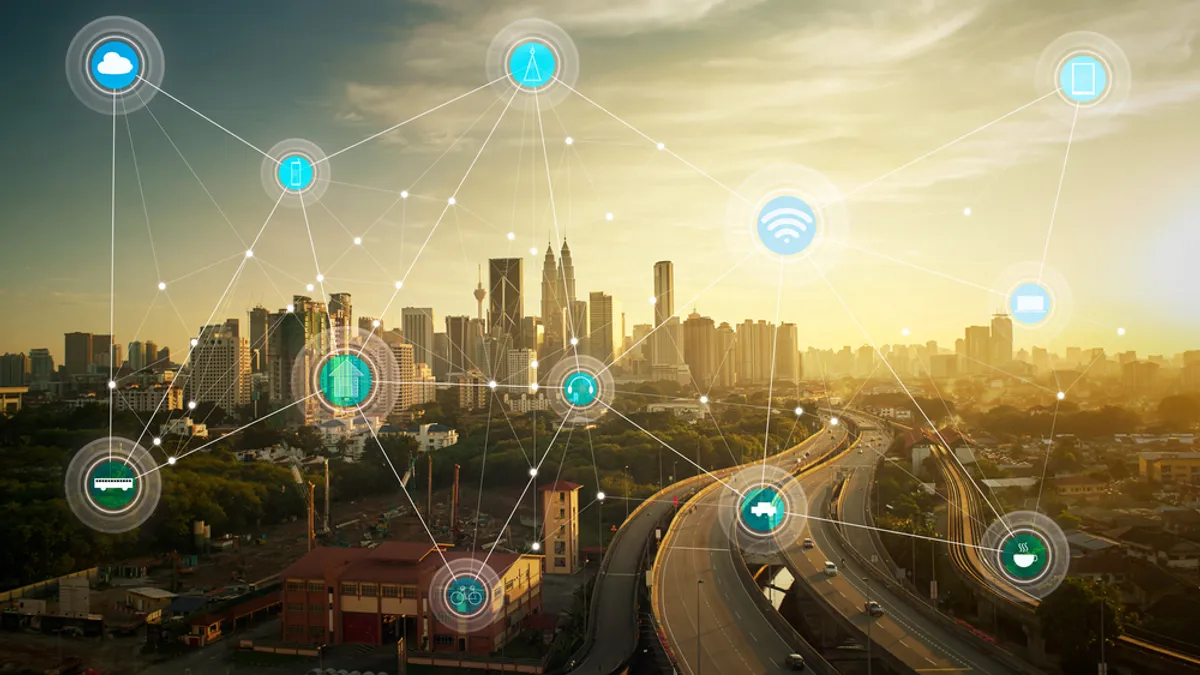Editor's Note: The following is a guest post from Marty Sprinzen, CEO and co-founder of Vantiq.
Global spending on smart city initiatives is expected to reach $327 billion by 2025, driven by strong growth in projects related to intelligent transportation, data-driven public safety, as well as platform-related and digital twin use cases.
The promise of operational transformation is exciting. If cities architect this correctly, they will be able to harvest unique operational insights from the myriad internet of things (IoT) devices generating massive amounts of data per second. Armed with real-time data analysis, managers can rapidly respond to events requiring immediate investigation, such as a sudden flood or a major traffic accident.
This is great, but let's not celebrate prematurely. Despite the hoopla, smart cities are failing to accomplish most of what's being promised. Not that the idea is flawed — software technology just isn't up to the task.
If cities hope to integrate real-time data sources and devices – such as AI-enabled IP and thermal cameras, IoT sensors, real-time location data or edge sensors – and build applications that will be able to monitor assets, events, people and environments, they need to be both event-driven and distributed. They must be collaborative and scalable. You can't take shortcuts.
Too often, however, we see unwieldy Rube Goldberg-like contraptions built with antiquated tools that are destined to fail. In fairness, it's exceptionally hard to write software that connects everything, not to mention the myriad challenges getting applications to work together in a reliable, scalable manner. But there's no getting around the following:
- Reliability: A smart city isn't going to be very smart if buggy applications require frequent downtime to install updates and to fix problems. Software needs to be connected 24 x 7 and everything needs to operate at full capacity, no matter what.
- Response time: Most deployments don’t feature the real-time response and situational awareness that are critical components of any smart city infrastructure.
- Security: This will continue to be an issue as long as smart cities use applications which rely on databases that routinely capture everything.
Navigating past the shoals
Privacy advocates have already raised qualms about the security of personal information in the era of IoT. Given the massive amount of data ricocheting around a smart city network, they justifiably worry about potential worst-case scenarios.
Clearly, if all this data is going to get captured and stored for processing and analysis, that's going to invite the attention of cyber criminals and others bent on mischief. But modern, event-driven applications don’t require the use of databases. They distribute compute resources and other services out to the edge to guarantee maximum performance, and they filter out huge volumes of extraneous data in order to focus on data related to critical events. When an event is detected, all the required processing and system actions are executed at the edge, immediately.
Two big pluses here: response time is shorter and no personally identifiable information is stored in a database. After a situation has been resolved, the data can be deleted from all of the edge devices.
What's more, most incidents won't require divulging the identity of the individuals involved. Even if the system spots somebody being attacked, you don't have to identify either the attacker or the person being attacked. The system simply identifies the fact that somebody is being attacked and the system then alerts the police in real time.
Architecting a new future
There’s ample incentive to get this right. Consider these examples of deployments embracing the use of event-driven architectures to their advantage:
- In Mexico City, systems at subway entrances and exits monitor people for signs of fever, offering a technological way to promote public health and, particularly, slow the spread of coronavirus (COVID-19).
- In Shanghai, an event-driven architecture is being used to ensure not only that elevators function properly, but they are also able to dispatch EMTs in case someone falls down and hurts themselves.
- At its new Tokyo headquarters, Softbank is using AI-enabled cameras, IoT sensors, location data, enterprise systems and many other technologies that help track various aspects of its building environment.
This is just the start. But it hints at what's possible on a grander scale.
We now have sensors that can track almost anything and they're becoming cheaper all the time. The network infrastructure has developed to the point where we have the ability to do massive computation and power analysis on the edge. The major next hurdle to overcome is the software challenge involved in building smart city style applications.
What's needed now is to choose the right application technology that will help developers design and build smart city types of applications that take us to a future in which cities are smarter, safer and more efficient.











